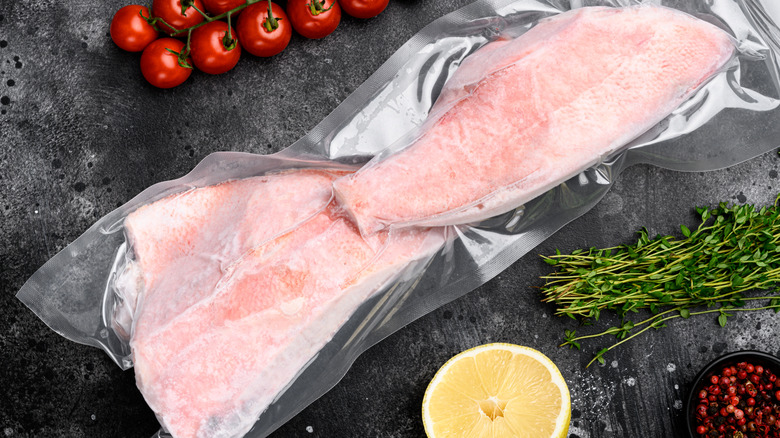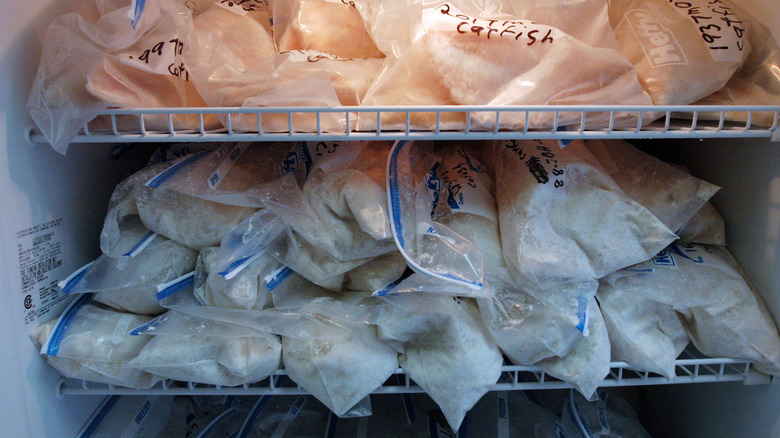The Ice Glaze Method You Can Use To Freeze Fish
With modern refrigeration standards, you'd think that freezing vegetables, meat, and fish would be quick and simple. Just wrap them in freezer paper, pop them in a freezer bag, or tuck them inside a sturdy, air-tight container, right? In many circumstances, yes. But, when there's something as priceless as fresh-caught fish sitting in your kitchen, you have much more incentive to preserve the delicate texture and flavorful flesh, especially when it won't grace dinner plates right away. That's when it pays to dig deeper into freezing techniques, such as ice glazing.
The term "glazing" in the culinary world doesn't apply only to sweet, sticky sauces coating holiday hams and short ribs. It's an industry-wide practice in seafood processing to preserve fresh fish in sheets of ice, known both commercially and in home kitchens as ice glazing. The ice essentially works as a preservative, helping retain the original flavor and texture of the fish while serving as protection against freezer burn. It also keeps the flesh from drying out with extended time in the 0-degree Fahrenheit temperatures of a home freezer.
Ice glazing does take a bit of effort on your part, including pretreating with either ascorbic acid or brine, depending on the type of fish. Once the treated fish is ready to enter the frozen chambers of your fridge or standalone freezer, you'll start the ice glazing. It won't be a one-and-done process, but it's not difficult and is definitely worth the effort.
Ice glazing fish at home
First up is pretreating the fish you've either reeled in, been gifted, or purchased from a fresh fish market. You preferably won't be working with fish that's been previously frozen, but if that's what you have in hand, then by all means, proceed with the ice-glazing process; pretreating and ice glazing will still preserve any flavor, color, and texture that remains. Determine whether you're holding a fatty fish, such as salmon, trout, bluefin tuna, or mackerel, or a lean fish, which covers species such as snapper, cod, redfish, flounder, and many more.
Pretreating fatty fish requires a 20- or 30-second dip into a solution of ascorbic acid and water, while lean fish need the same amount of time in a brine of salt and water. The fish then goes unwrapped into the freezer until frozen solid, then removed and dipped into a bowl of ice water — then frozen again. Repeat the process as many times as necessary until a visible sheet of ice encapsulates the fish, naturally preserving it until you're ready to oven-bake, pan-fry, smoke, or grill that fish to tasty perfection. Just be sure to wrap the final ice-glazed fish in freezer-proof paper or high-quality freezer bags until removal.

